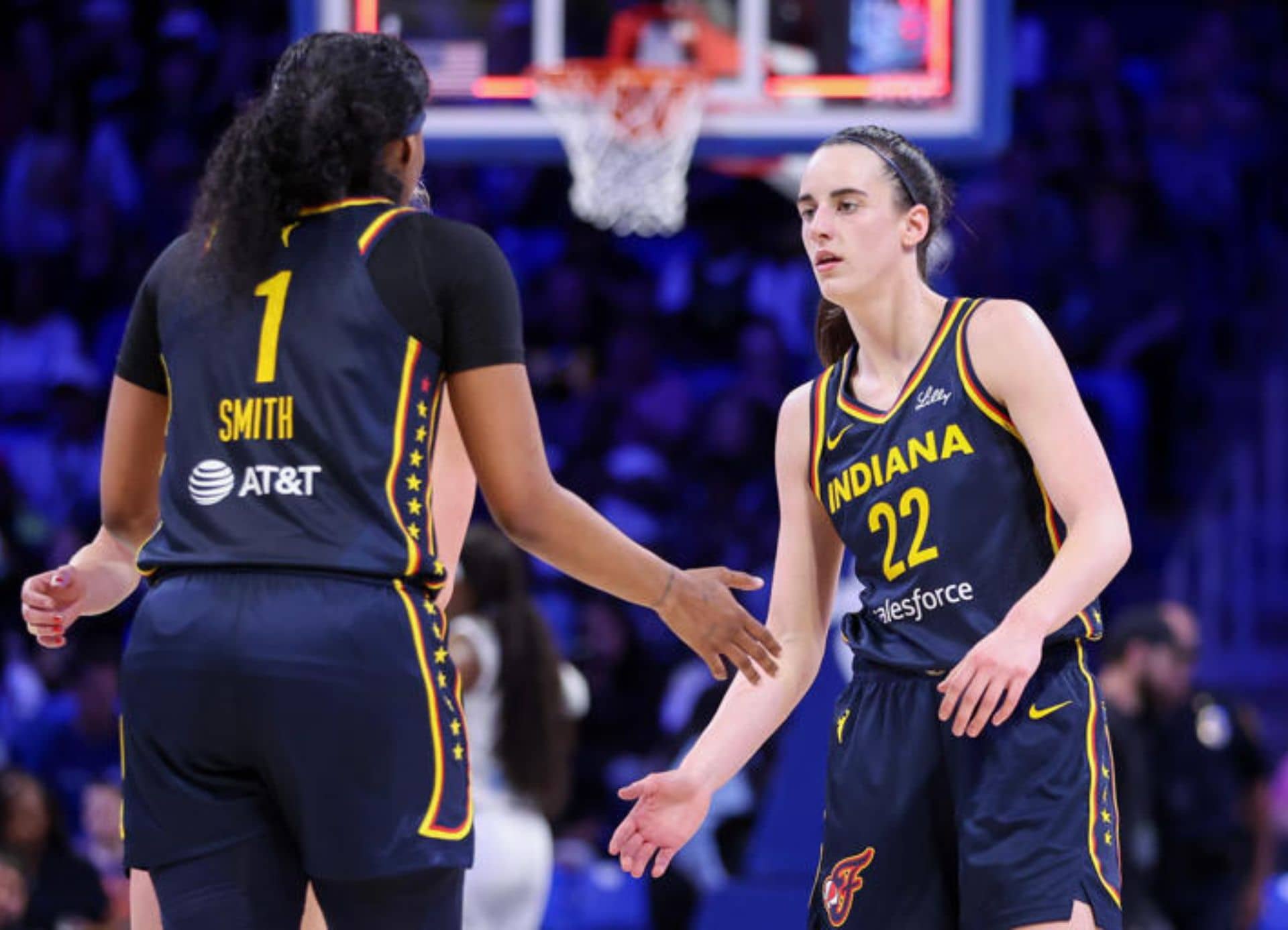
Worldwide, basketball fanatics watch NBA games. However, the regulations can be unclear if you’ve never engaged in the sport before. Let’s go over the fundamentals of an NBA game, such as the breaks, timeouts, quarters, and playoff adjustments. So here are the 10 most frequently asked questions about NBA:
IN THIS ARTICLE
- How is an NBA game structured in terms of quarters?
- What is the purpose of halftime in an NBA game, and how long does it last?
- What are timeouts in an NBA game, and how are they used?
- How many games are played during the NBA regular season, and how do teams face each other?
- What significant changes occur in the NBA playoffs compared to the regular season?
- Why do free throws become more critical during the playoffs, especially in the final minutes and overtime?
- What happens if an NBA game is tied at the end of the regular season?
- Besides quarters and timeouts, what other situations cause the NBA game clock to stop?
- Why do NBA timeouts and halftime often last longer than expected?
- What are some activities that happen during halftime aside from players resting?
1. How is an NBA game structured in terms of quarters?
Each of the four quarters that make up an NBA game is carefully planned out to last 12 minutes. By dividing the game into four discrete periods, this structure enables teams to regroup and plan at the conclusion of each quarter. Because the clock is stopped for a number of situations, including fouls, out-of-bounds plays, and timeouts, a quarter may actually last much longer than 12 minutes. Teams sometimes make plays in the last minute to establish a scoring advantage before the half, therefore each quarter’s conclusion is crucial. The side with the most points at the end of the fourth quarter wins the match. This methodical approach guarantees that each team has an equal and balanced chance to demonstrate their abilities and tactics during the match.
2. What is the purpose of halftime in an NBA game, and how long does it last?
In an NBA game, the fifteen minutes known as halftime are used for several important objectives. Players can rest, recover, and consult with the medical personnel about any minor injuries during this mid-game break. It also gives coaches a crucial time to assess their team’s performance in the first half, modify their strategy, and energize their players for the second half. Halftime entertainment for spectators frequently consists of performances, competitions, and unique presentations, adding to the entire game experience. In order to generate income for the league and its partners, broadcasters use the extended break as a crucial opportunity to display advertising. The NBA game structure places a lot of importance on halftime since it provides a chance for relaxation, strategy, and entertainment.
3. What are timeouts in an NBA game, and how are they used?
In an NBA game, timeouts are deliberate pauses that coaches call for a variety of purposes. A set number of timeouts are given to each team per half during the regular season—seven overall, with no more than four being carried over to the second half. The amount of timeouts is lowered during the playoffs to highlight their strategic significance. Timeouts last between two and forty-five seconds and three minutes and fifteen seconds. These stops are used by coaches to plot important plays, rest players, modify tactics, and stymie the momentum of the opposition. During this time, players also talk strategy and drink. In close games, timeouts are crucial because they enable accurate play planning and execution, which frequently decides the result.
4. How many games are played during the NBA regular season, and how do teams face each other?
Every NBA team plays 82 games during the regular season. With a schedule that spans from October through April, every club is guaranteed to play both conference and non-conference opponents on multiple occasions. Teams play a balanced mix of environments, with 41 games being played at home and 41 away. Every team plays three or four games against teams in their own conference and twice, once at home and once away, against teams in the opposing conference. This demanding schedule helps ensure proper playoff seeding by equitably evaluating each team’s performance across a wide range of circumstances and matchups.
5. What significant changes occur in the NBA playoffs compared to the regular season?
The NBA playoffs up the ante on competition by bringing about a number of significant alterations from the regular season. First, each round’s structure changes to a best-of-seven series, in which teams have to win four games to progress. Every game is more important and has larger stakes. With only six timeouts allotment per half as opposed to seven during the regular season, coaches are forced to be more smart with their break management. Furthermore, defenses usually go more aggressive, and teams focus more on making sure their plays are executed perfectly. Player rotations might become more concentrated, emphasizing the best players. The pressure and excitement are further increased during the playoffs by increased media coverage and larger, more enthusiastic crowds.
6. Why do free throws become more critical during the playoffs, especially in the final minutes and overtime?
Due to their ability to decide games, free throws become even more significant during the playoffs, especially in the last minutes of overtime. Every point matters in these high-stress situations, and free throws present an unobstructed opportunity to score without facing any opposition resistance. The “one-and-one” scenario, in which a player needs to make the first free throw in order to have a second chance, heightens the suspense and has a big influence on how the game turns out. In order to halt the clock and force free throws, teams frequently use tactics like intentional fouling, which puts tremendous pressure on the shooters. Free throws are a key component of late-game strategy since they may either secure a win or result in heartbreaking defeats.
7. What happens if an NBA game is tied at the end of the regular season?
In an NBA game, overtime is used to decide the winner if it is tied at the end of the fourth quarter. Five-minute overtime periods are played till the conclusion of which team has scored more points. There is no cap on the number of overtime periods that can be played, unlike regular quarters. Since every possession can affect the outcome of the game, overtime carries a much higher level of intensity and pressure. The prolonged play can cause fatigue and raise the chance of fouling out, so coaches and players need to be careful with how much energy they expend. The dramatic and memorable occurrences that frequently occur during overtime periods highlight the seriousness of these crucial play extensions.
8. Besides quarters and timeouts, what other situations cause the NBA game clock to stop?
The NBA game clock stops for several reasons beyond the end of quarters and timeouts. Key situations include:
- Fouls: When a foul is called, the clock stops to allow free throw attempts or to reset play from out-of-bounds.
- Out-of-Bounds Plays: The clock stops when the ball goes out of bounds, resuming when it is inbound.
- Injuries: If a player is injured and requires attention, the game clock stops until they are attended to and play can safely resume.
- Replay Reviews: Coaches can challenge certain calls, leading to official reviews that stop the clock. These reviews ensure the correct call is made, but they can extend the length of the game.
- Jump Balls: The clock stops for jump ball situations, such as tied-up possessions, and resumes once control is established.
These stoppages are crucial for maintaining the integrity and fairness of the game, allowing for accurate officiating and player safety.
9. Why do NBA timeouts and halftime often last longer than expected?
NBA timeouts and halftimes frequently last longer than intended for a variety of reasons. The main reason for extending these pauses is to fit in commercials, which provide a substantial source of income for the league and the broadcasters. The extra time also enables participants to hydrate, heal completely, and get medical care if necessary. During this extra time, coaches study the game, make plans, and let their teams know what needs to be changed. In-arena entertainment, like as acts and interviews that captivate the crowd and improve the entire game experience, is especially important during halftime. These intervals are longer because of a combination of factors, including coach and player requirements, marketing considerations, and fan interaction initiatives.
10. What are some activities that happen during halftime aside from players resting?
During halftime, the activities extend beyond players resting and strategizing. The break includes various entertainment elements designed to keep the crowd engaged and energized. Common halftime activities include:
- Performances: Dance teams, cheerleaders, and mascots often perform routines to entertain the audience.
- Contests: Fans might participate in on-court contests, such as shooting competitions, where they can win prizes.
- Special Presentations: The arena may host ceremonies to honor former players, local heroes, or special guests, adding a ceremonial touch to the event.
- Interviews: Broadcasters might conduct interviews with players, coaches, or celebrities, providing insights and entertainment for viewers at home.
- Promotional Activities: Halftime is an opportunity for sponsors to engage with fans through promotional activities and giveaways.
These elements make halftime a vibrant and engaging part of the NBA game, enhancing the overall spectator experience both in the arena and for viewers watching on television.
This Article was written by Tushar @09Sports.com
- Derrick White: A Beacon of Boston Sports Solidarity
- NBA: Tatum’s Heroics Lift Celtics in Thrilling Game 1 Victory Over Pacers
- Friendly between Newcastle and Tottenham: Alan Shearer criticizes the ‘reckless’ decision to arrange an odd match just a few days after the Premier League season ends, raising concerns about its reasoning
- Nationals Suffer a Crushing Defeat as Patrick Corbin Struggles Against the Twins
- Tyrese Haliburton’s Status for Game 2: Pacers’ Hopes Rest on Star Guard’s Return



